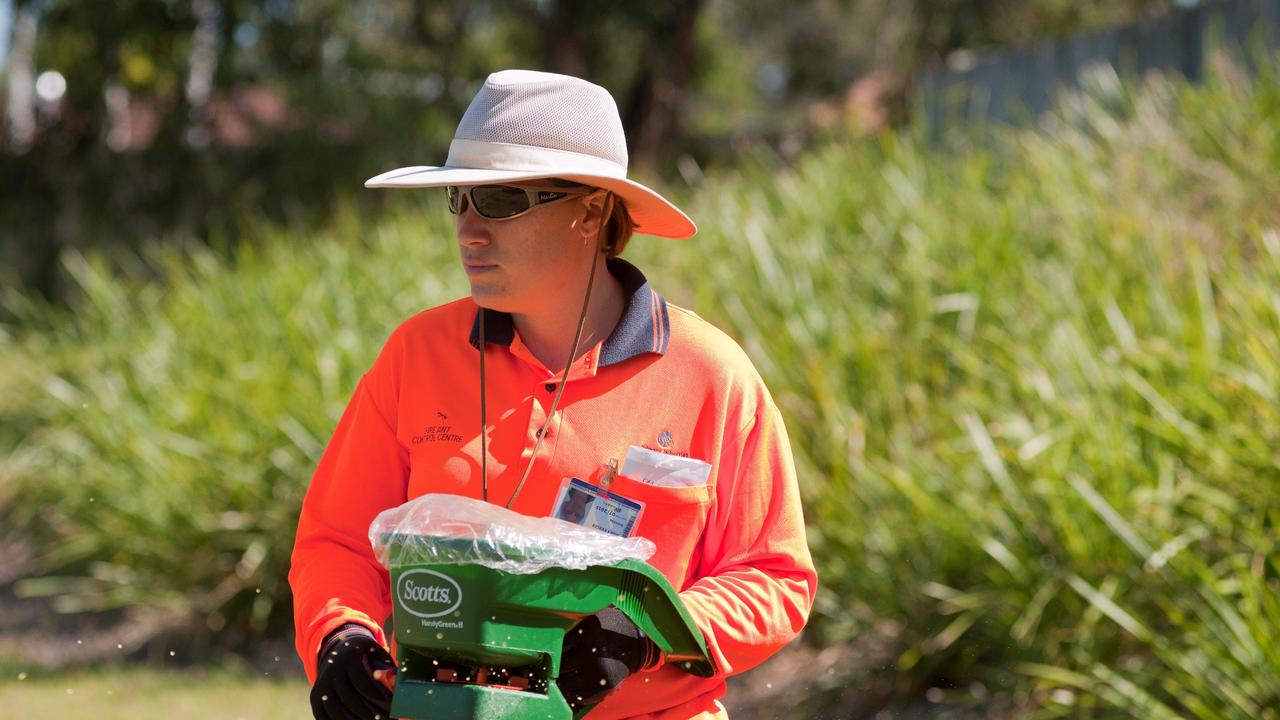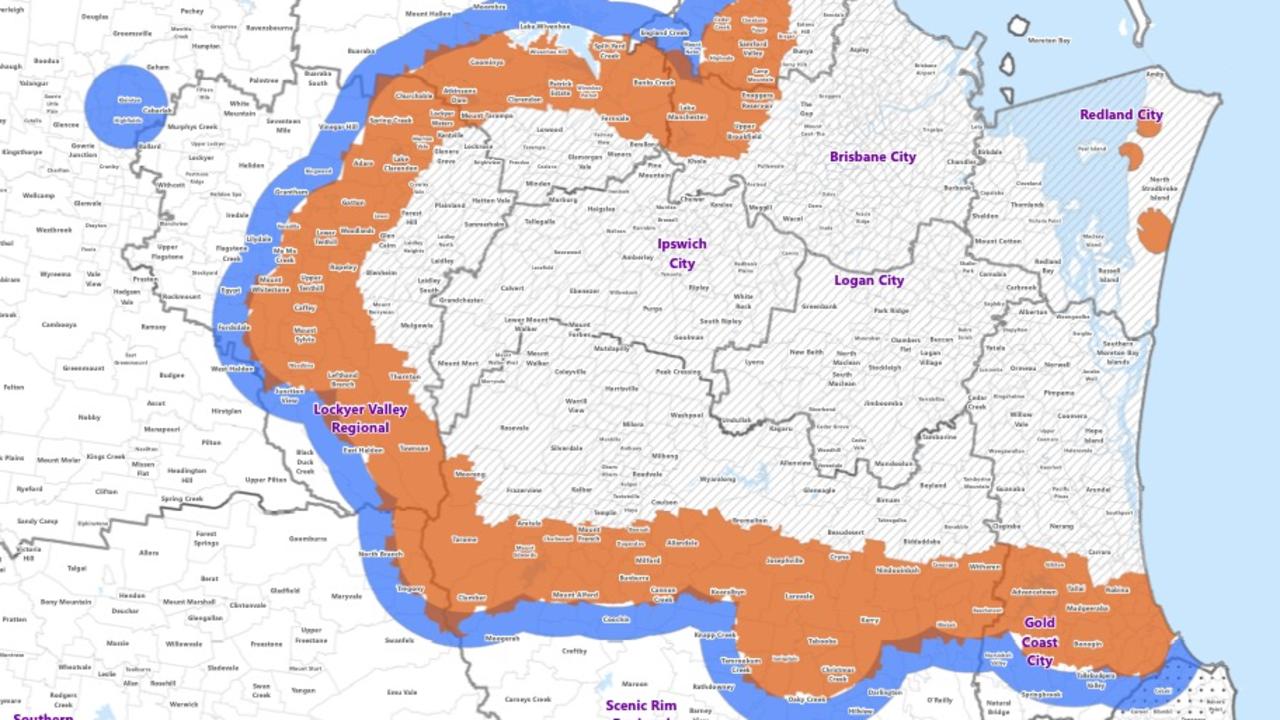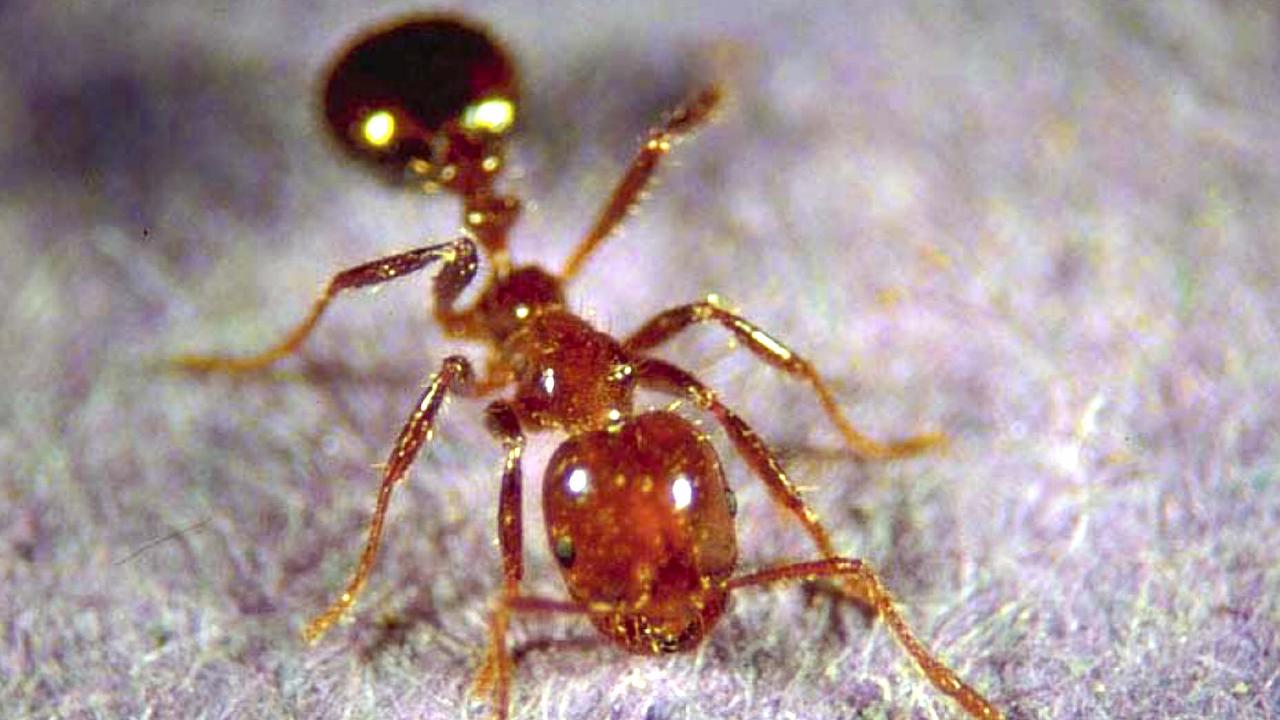Bombshell report reveals fire ants could kill six people a year, cost homes $110m+
A notorious pest wreaking havoc across Aussie states could kill people each year if allowed to continue to spread, according to bombshell findings.
A notorious pest could cause up to six deaths, lead to 116,000 medical visits and cost households $118m a year if allowed to spread uncontrolled across one Aussie state, a bombshell report has found.
The chilling warning comes as biosecurity authorities scramble to contain the spread of the red imported fire ant, which has rapidly spread across Queensland and even extended down into NSW.
But recent eradication attempts in Queensland are facing a difficult step as landholders – concerned about the ant bait being “toxic” and fearing its impacts on the ecosystem and their livestock – face off with government eradicators.
Some are now refusing entry to treatment officers attempting to spread the bait, which is also found in fly sprays and pet flea tablets.
The ongoing tension has led to police stepping in amid mounting stand-offs with the mandatory treatment program.

In their report for The Australia Institute (TAI), authors Minh Ngoc Le and Rod Campbell determined fire ants could be responsible for six deaths every year, across the state, if allowed to continue spreading.
The authors analysed average Australian medical and veterinary costs, the average cost of pesticides and pest controls spent by each household and prior reports developed by Biosecurity Queensland in determining their results.
Each electorate will need to spend an average of more than $2m every year to control fire ants, along with additional costs for medical services and veterinary visits should pets get bitten.
The report found the resulting medical costs would balloon to $47.35m and cost households $121.4m in eradication costs.

“While fire ants pose a risk to all of Australia, Queensland faces the most immediate and significant danger,” the report concludes.
“Modelling shows that red imported fire ants could spread as far as Far North Queensland by 2035 unless funding for existing eradication programs is increased.”
Anger over ‘toxic’ fire ant bait
The National Fire Ant Eradication Program (NFAEP) uses two types of granular treatment to deal with fire ants: one involving insect growth regulator, the other a fast-acting insecticide.
Insect growth regulator (IGR) treatment contains 5g per kilogram of pyriproxyfen or S-methoprene – a common ingredient in most household pesticides that mimics a natural hormone in insects to stop their growth.
The insecticide contains either indoxacarb or a combination of hydramethylnon and pyriproxyfen – usually found in cockroach baits or dog flea collars.
Both these treatments use small pieces of corn grit soaked in soybean oil that are foraged and circulated by ants to kill the colony.
Some landowners claim the baits endanger their livestock and health in an “excessive, mass poisoning” of areas.
Trevor Hold, a landowner in Queensland’s Lockyer Valley region and fierce campaigner against the treatment program, said the chemicals being used were known to have negative impacts on non-targeted species.

He claimed cows on his property had died as a result of poisoning, which he attributed to the use of pyriproxyfen and s-methoprene.
“(They) can impact embryos and foetus development of calves,” Mr Hold said.
“This creates more miscarriages in cows and if the calf does make it to full term, they die prematurely from toxic liver poisoning and cognitive decline over a six-week period.”
Mr Hold said he wanted to see a different approach, including the use of hot water injections directly into ant colonies.
The process has been backed by biologist Joshua King – a professor at the University of Central Florida – who has derided the use of the bait in Queensland.
In an open letter, he said the current approach was “not sustainable, excessively costly” and risked hastening the spread of fire ants.
But the NFAEP said the use of the granular treatments was considered safe by Australia’s pesticides and veterinary medicine authority, along with the Therapeutic Goods Administration (TGA).
“There is no evidence that fire ant treatment has resulted in the poisoning or death of any vertebrate species,” a NFAEP spokeswoman said.
The spokeswoman said the use of hot water treatments was not considered a successful approach to controlling the whole nest or treating large land areas.
“Our current eradication approach is proven,” the spokeswoman continued.
“Australia is the only country actively working to eradicate fire ants. Other countries, including the United States, are focused on suppression and/or containment, and using different strategies.”
Police called in to assist with landowner stand-offs
Treating officers working under the NFAEP are allowed under law to enter Queensland properties for eradication without the consent of owners.
The program still maintains preference to work with landowners to undertake eradication at a time that suits their convenience – informing owners of the planned eradication through letterbox drops, emails, phone calls and texts.
But stand-offs have emerged between some owners and eradication officers who are refused entry.
One Facebook group calling on people to stop the “toxic” program urges landowners to refuse entry, erect signs warning of trespassing and provide a “reasonable excuse” under the Biosecurity Act 2014 to stop entry.

In some posts, landowners are seen confronting eradication staff.
People face hefty fines for obstructing designated officers under Queensland law.
In a statement, Queensland Police confirmed it had been requested to assist some NFAEP staff by “facilitating access to properties where occupants are not compliant with the treatment process”.
“Special duties officers will be allocated to this task, ensuring no impact on the delivery of frontline services,” a police spokeswoman said.
“This collaboration aims to support biosecurity efforts while maintaining essential policing operations.”
Mr Hold said the hostilities between both parties was a result of the program not considering the importance of the “sacred space of private residence”.
“Having strangers invade safe spaces of people’s properties creates negative emotions,” he said
“Imagine 10-20 people invading your personal space, distributing poisonous chemicals around your property.
“Many ordinary people feel it is a reasonable excuse that not having fire ants evident on your property is justification not to chemically treat fire ants.”




